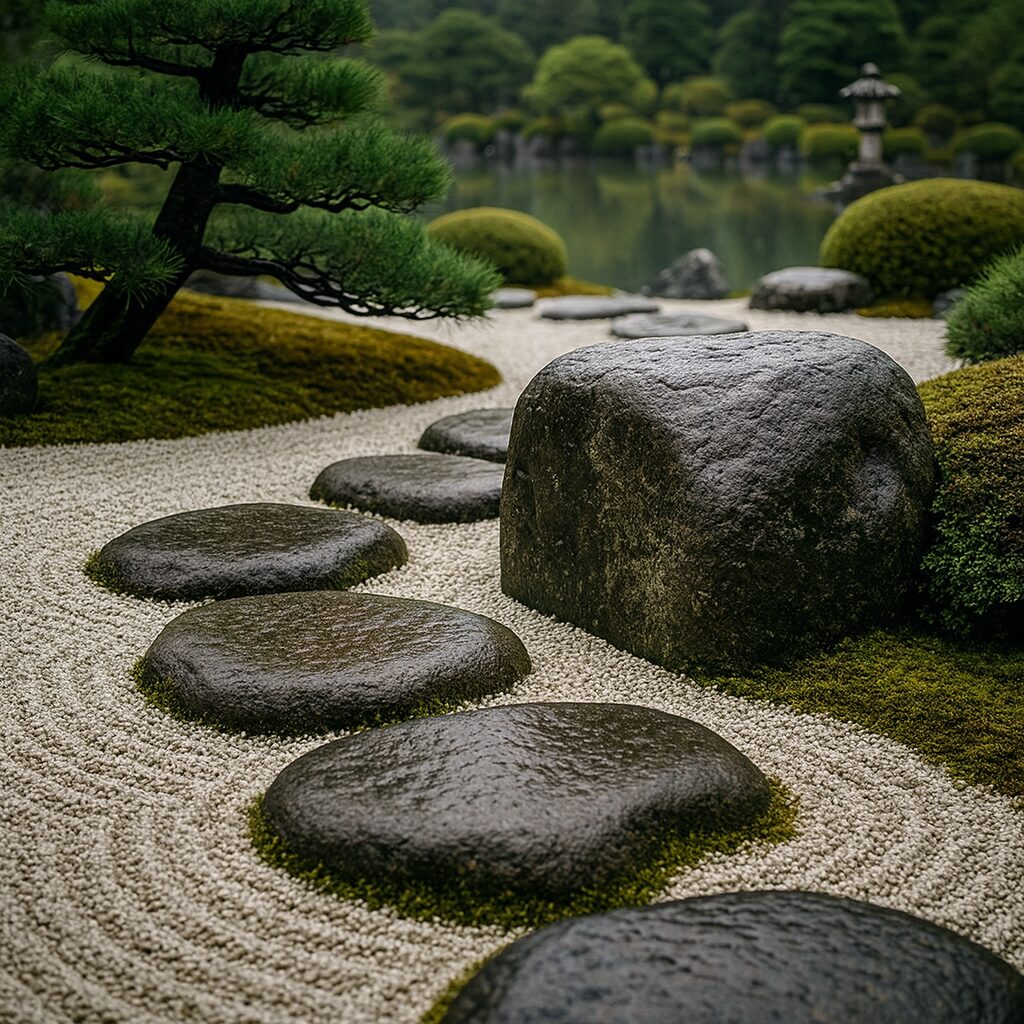When the rain stops, the kei-seki still holds it—
not only water, but a quiet stillness with Kokoro.
These days had been moving too quickly for too long,
and I stepped into the Japanese garden to let that pace loosen.
Along the tobi-ishi path—stepping stones placed with deliberate irregularity—
a glint caught my eye:
a large kei-seki, the ornamental stone set as a focal point in the landscape,
its surface dark and glistening in the after-rain light.
Where Water Stays
In gardens like this, stones are not simply set in place.
Tobi-ishi guide each step and sightline,
while kei-seki anchor the scene,
holding the garden’s stillness in their form.
The air after the shower was cool enough
to rest lightly on the skin.
From the moss at the stone’s base,
the scent of wet earth rose quietly.
Its surface, darkened as if ink had seeped in,
was beaded with droplets
that lingered before sliding down.
From the ground beneath my steps,
a faint dampness and softness rose into my body,
slowing my movement
before I noticed it.
I stood still,
as if the rain’s quiet weight had extended into me.
The Quiet of Waiting
The stone did not hurry to release the water.
It let it settle,
slow enough for the air to notice.
In shallow hollows,
small mirrors reflected a pale sky
still shifting after the rain.
Across the still surface of the pond,
a single drop fell,
with a sound too small to break the quiet.
In that pause,
the weight of these past months felt far away—
as if it had been set down without me noticing.
The Stillness That Holds Time
Standing before the stone,
what I notice is not its firmness,
but the stillness that holds what has passed.
The garden’s quiet draws Kokoro
into the same unhurried time
as the water finding its way into the earth.
The stone does not speak,
and there is no need.
In that quiet weight,
I feel something in myself ease—
as if the long rush of days
has finally loosened its hold.
A Quiet Weight with Kokoro
By the time the sun returned,
the kei-seki had lightened.
But the quiet stillness with Kokoro remained—
somewhere within,
past the surface,
past the moment I could see.
Here, the stone and Kokoro share the stillness,
until the breeze carries it toward the wet weave of the sudare,
where light begins to sway again.
Footnotes
Tobi-ishi: stepping stones guiding pace and gaze.
Kei-seki: ornamental focal stone in a Japanese garden.
Featured image: The image was created by AI (ChatGPT)



Comments